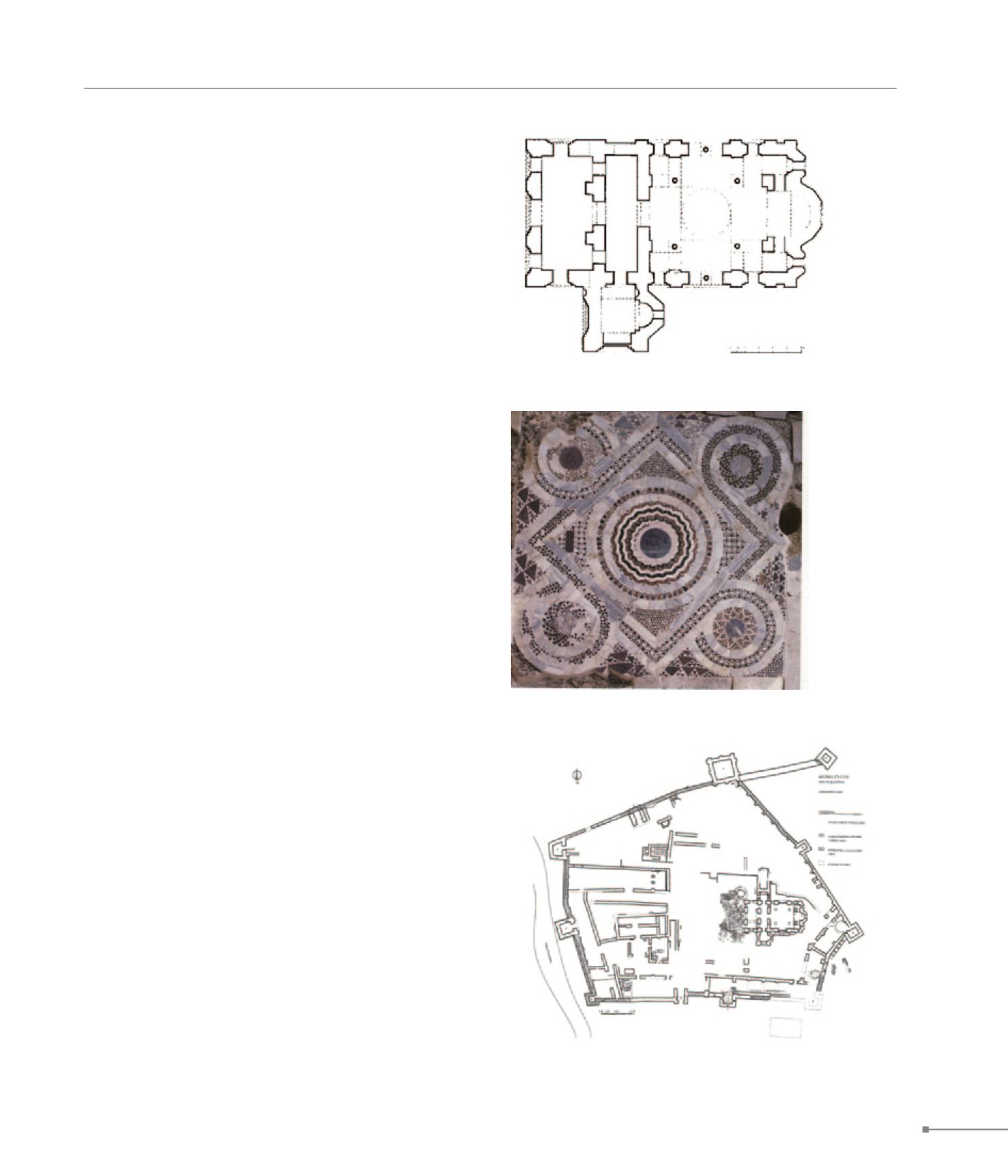
Zographou Monastery.
Aghios Panteleimon Μonastery.
MACEDONIA
115
70.
Docheiariou Monastery.
This was founded in the late 10th or early 11th c., from which
time altar screen sculptures date. The main structures of the
modern complex were built in the Post–Byzantine period. In the
catholicon is preserved a Mid-Byzantine wall relief depicting the
Ascension of Alexander the Great.
nants of the catholicon, a complex cross-in-square church with
two narthexes and a domed funerary chapel, have been found.
The sculpted ornamentation and marble inlays on the floor at-
test to the rich decoration of the church and the prominent posi-
tion of the monastery at its peak.
68.
Zographou Monastery.
The monastery, dating from the 10th c., passed to a Bulgar-
ian brotherhood in the 11th or 12th and has been inhabited by
Bulgarian monks to this day. No Byzantine structures survive.
69.
Konstamonites Monastery.
There have been references to this monastery since the 11th
c. In the early 14th c. it was destroyed by the Catalans but was
widely reconstructed in the early 15th c., financed by the Ser-
bian general Radits. In its present-day form the complex fea-
tures buildings of the late Post-Byzantine period – mostly of the
19th c.
71.
Xenophontos Μonastery.
The foundation of the monastery possibly dates from 998. The
old catholicon, an athonite church with a two-columned lite and
two chapels, dates from the first period of the monastery’s op-
eration, probably in the 10th-11th c. In the interior, floors with
marble inlays and a marble altar screen (11th c.) survive. The
initial phase of the SE wing also dates from the 11th c.
72.
Aghios Panteleimon Μonastery.
Referred to as “Rossikon” (Russian) since the 12th c., this
monastic foundation was reconstructed on its current site in
67. Zygou monastery, catholicon (Μονή Ζυγού, καθολικό)
67. Zygou monastery, inlay decoration (Μονή Ζυγού, μαρμαροθέτημα
δαπέδου)
67. Zygou monastery complex, ground plan (Μονή Ζυγού, το
συγκρότημα, κάτοψη)


